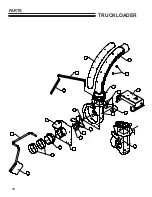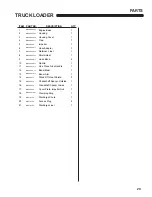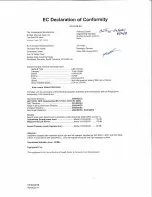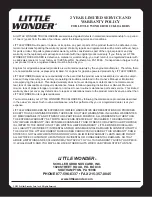
1
4
TRUCKLOADER
BEFORE STARTING THE ENGINE
1. Be familiar with the controls, how each functions,
and what each operates.
2. Check engine oil level. Add oil if necessary,
following the engine manufacturer’s
recommendations. Refer to engine manual
included with literature packet.
3. Check the air cleaner for dirty, loose, or
damaged parts. Clean or replace if necessary.
4. Check the air intake and cooling area for dirt or
debris and clean as necessary.
Gasoline is extremely flammable and highly
explosive under certain conditions. BE SURE to
install fuel cap after refueling.
Fill fuel tank with good quality, clean, unleaded
regular gasoline to the level recommended by the
engine manufacturer.
TO CHECK OR ADD FUEL:
-
Use a funnel to avoid spilling.
-
Do it outdoors.
-
Do not smoke.
-
Stop the engine; allow to cool.
-
Do not overfill.
-
Clean up spilled fuel.
STARTING THE ENGINE
1. Turn the engine and fuel lever on and move the
throttle to the half open position.
2. Move the choke to the ON position for cold
starts. For warm starts attempt to start without
the choke first to avoid flooding. If the engine
does not start then use the choke.
3. Pull the recoil starter handle firmly to start the
engine.
4. When the engine starts, gradually back off the
choke until the engine runs with no choke.
OPERATION
INTENDED USE
This unit is intended for vacuuming leaves, clippings and other similar sized organic material from the ground
into a truck or trailer. Large sized or long stringy material will tend to clog.
Vacuuming sand, rocks, and hard litter will shorten the life of this machine and may damage the machine or
parts of
it.
PRE-OPERATION CHECK LIST
(OPERATOR’S RESPONSIBILITY)
-
Review and follow all safety rules and safety
decal instructions.
-
Check that all safety decals are installed and in
good condition. Replace if damaged.
-
Check to make sure all shields and guards are
properly installed and in good condition.
-
Make sure the discharge chute and hose are
installed.
-
Check the hose, discharge chute, liners, and
housing for wear. Do not operate if these parts
are worn through. Replace or repair before
operating.
-
Check that all hardware is properly installed and
secured.
-
Check to be sure engine is free of dirt and
debris. Pay particular attention to the cooling
fins, governor parts and muffler. Clean air intake
screen. Check air cleaner; service if necessary.
-
Clean area around the oil fill dipstick. Remove
dipstick and check to be sure oil is in operating
range (between marks on dipstick). Add oil if
necessary but
Do Not Overfill.
See engine
manual for oil specifications. Install dipstick
assembly firmly until cap bottoms out on tube.
Dipstick assembly must always be secured into
fill tube when engine is running.
-
Inspect material to be vacuumed and remove
stones, branches or other hard objects that
might damage the machine or cause it to clog.























